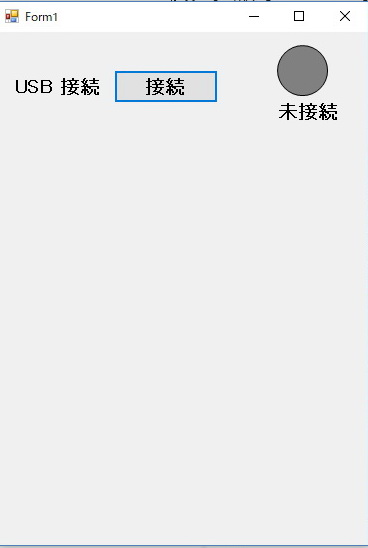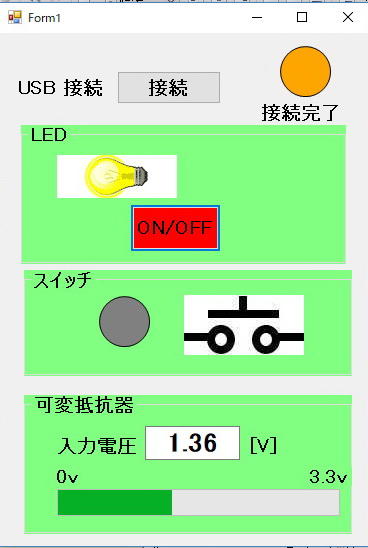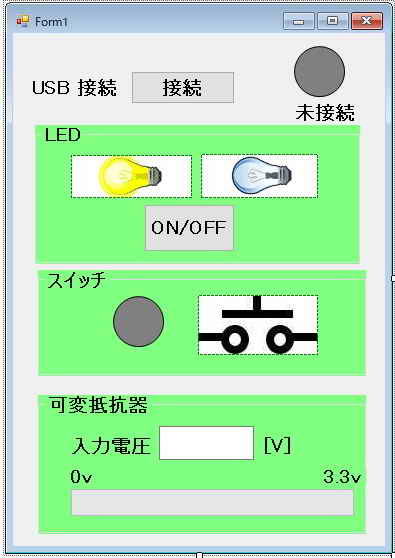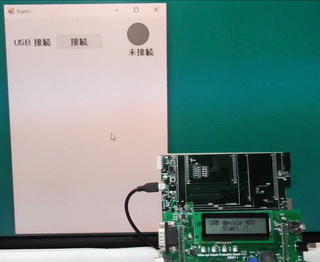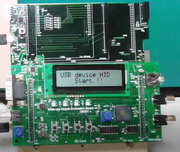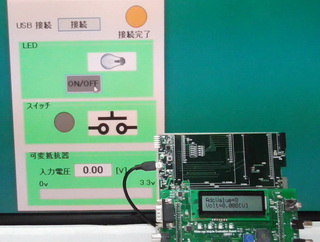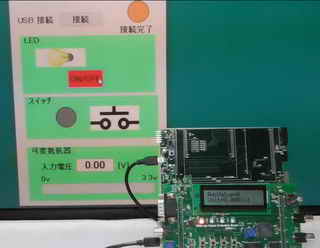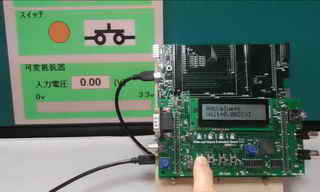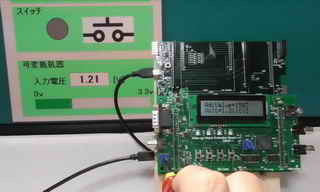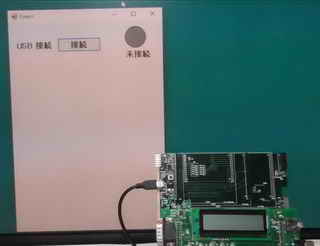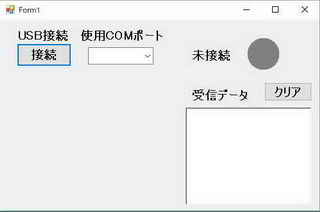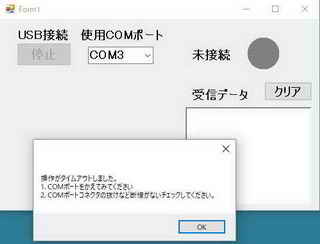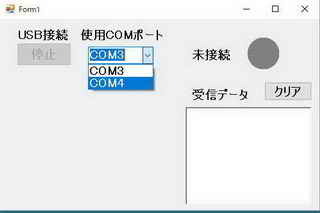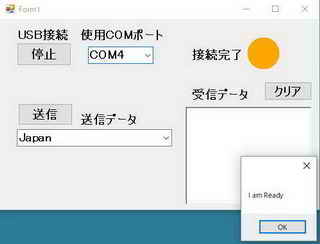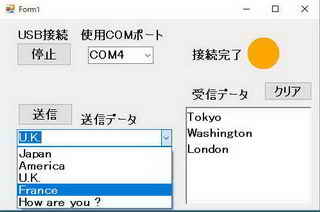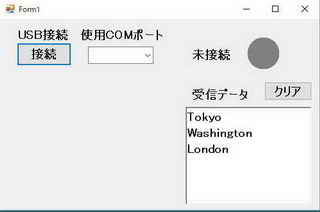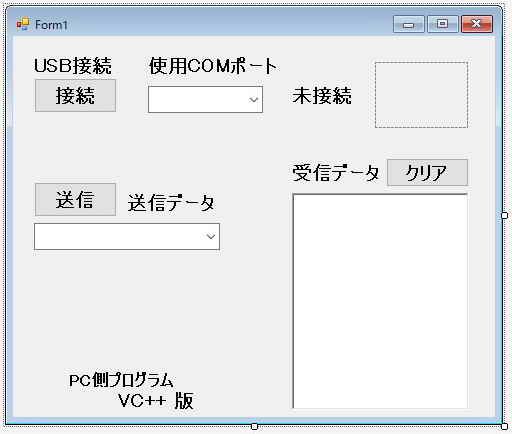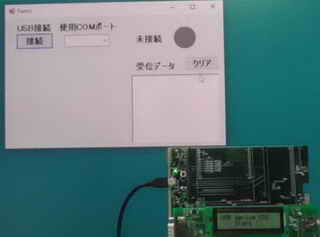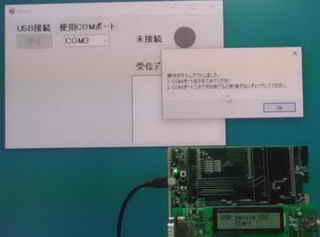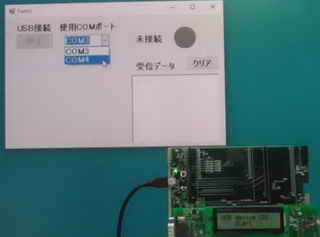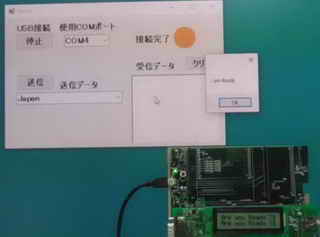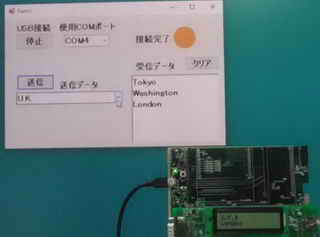//Form1.h
#pragma once
//以下は、マイクロチップのサンプルコード
//"C:\microchip_solutions_v2013-06-15\USB\Device - HID - Custom Demos\Simple Demo - Windows Software\Microsoft Visual C++ 2005 Express"
//を参照して作成しています。
//-------------------------------------------------------------------------------------------------------------------------------------------------------------------
//-------------------------------------------------------BEGIN CUT AND PASTE BLOCK-----------------------------------------------------------------------------------
/********************************************************************
FileName: Form1.h
Dependencies: Platform SDK during development. When compiled, needs
.NET framework 2.0 redistributable to run
Processor: x86
Hardware: Need a free USB port to connect USB peripheral device
Compiler: Microsoft Visual C++ 2005 Express Edition (or better)
Company: Microchip Technology, Inc.
Software License Agreement:
The software supplied herewith by Microchip Technology Incorporated
(the 鼎ompany・ for its PICョ Microcontroller is intended and
supplied to you, the Company痴 customer, for use solely and
exclusively with Microchip PIC Microcontroller products. The
software is owned by the Company and/or its supplier, and is
protected under applicable copyright laws. All rights are reserved.
Any use in violation of the foregoing restrictions may subject the
user to criminal sanctions under applicable laws, as well as to
civil liability for the breach of the terms and conditions of this
license.
THIS SOFTWARE IS PROVIDED IN AN 鄭S IS・CONDITION. NO WARRANTIES,
WHETHER EXPRESS, IMPLIED OR STATUTORY, INCLUDING, BUT NOT LIMITED
TO, IMPLIED WARRANTIES OF MERCHANTABILITY AND FITNESS FOR A
PARTICULAR PURPOSE APPLY TO THIS SOFTWARE. THE COMPANY SHALL NOT,
IN ANY CIRCUMSTANCES, BE LIABLE FOR SPECIAL, INCIDENTAL OR
CONSEQUENTIAL DAMAGES, FOR ANY REASON WHATSOEVER.
********************************************************************
File Description:
Change History:
Rev Date Description
1.0 04/08/2008 Initial release
2.3 08/11/2008 Slight update for improved robustness
2.7a 08/29/2010 Adding explicit calling conventions to the DllImports.
This is needed for Visual Studio 2010 compatibility.
No functional changes to the code. Backwards compatibility
should be retained.
********************************************************************
NOTE: All user made code contained in this project is in the Form1.h file.
All other code and files were generated automatically by either the
new project wizard, or by the development environment (ex: code is
automatically generated if you create a new button on the form, and
then double click on it, which creates a click event handler
function). All user made code is contained in clearly marked cut and
paste blocks.
********************************************************************/
//Includes
//Includes
#include <Windows.h> //Definitions for various common and not so common types like DWORD, PCHAR, HANDLE, etc.
#include <setupapi.h> //From Platform SDK. Definitions needed for the SetupDixxx() functions, which we use to
//find our plug and play device.
//Modify this value to match the VID and PID in your USB device descriptor.
//Use the formatting: "Vid_xxxx&Pid_xxxx" where xxxx is a 16-bit hexadecimal number.
#define MY_DEVICE_ID "Vid_04d8&Pid_003F"
//-------------------------------------------------------END CUT AND PASTE BLOCK-------------------------------------------------------------------------------------
//-------------------------------------------------------------------------------------------------------------------------------------------------------------------
//本プロジェクトの名前空間に変更
namespace CWhiteForm {
using namespace System;
using namespace System::ComponentModel;
using namespace System::Collections;
using namespace System::Windows::Forms;
using namespace System::Data;
using namespace System::Drawing;
//
//namespace GenericHIDSimpleDemo {
//
// using namespace System;
// using namespace System::ComponentModel;
// using namespace System::Collections;
// using namespace System::Windows::Forms;
// using namespace System::Data;
// using namespace System::Drawing;
//-------------------------------------------------------------------------------------------------------------------------------------------------------------------
//-------------------------------------------------------BEGIN CUT AND PASTE BLOCK-----------------------------------------------------------------------------------
using namespace System::Runtime::InteropServices; //Need this to support "unmanaged" code.
/*
In order to use these unmanaged functions from within the managed .NET environment, we need
to explicitly import the functions which we will be using from other .DLL file(s). Simply
including the appropriate header files is not enough.
Note: In order to avoid potential name conflicts in the header files (which we still use),
I have renamed the functions by adding "UM" (unmanaged) onto the end of them. To find
documentation for the functions in MSDN, search for the function name without the extra
"UM" attached.
Note2: In the header files (such as setupapi.h), normally the function names are
remapped, depending upon if UNICODE is defined or not. For example, two versions of the
function SetupDiGetDeviceInterfaceDetail() exist. One for UNICODE, and one for ANSI.
If the wrong version of the function is called, things won't work correctly. Therefore,
in order to make sure the correct one gets called (based on your compiler settings, which
may or may not define "UNICODE"), it is useful to explicity specify the CharSet when doing
the DLL import.
*/
#ifdef UNICODE
#define Seeifdef Unicode
#else
#define Seeifdef Ansi
#endif
//Returns a HDEVINFO type for a device information set (USB HID devices in
//our case). We will need the HDEVINFO as in input parameter for calling many of
//the other SetupDixxx() functions.
[DllImport("setupapi.dll" , CharSet = CharSet::Seeifdef, EntryPoint="SetupDiGetClassDevs", CallingConvention=CallingConvention::Winapi)]
extern "C" HDEVINFO SetupDiGetClassDevsUM(
LPGUID ClassGuid, //Input: Supply the class GUID here.
PCTSTR Enumerator, //Input: Use NULL here, not important for our purposes
HWND hwndParent, //Input: Use NULL here, not important for our purposes
DWORD Flags); //Input: Flags describing what kind of filtering to use.
//Gives us "PSP_DEVICE_INTERFACE_DATA" which contains the Interface specific GUID (different
//from class GUID). We need the interface GUID to get the device path.
[DllImport("setupapi.dll" , CharSet = CharSet::Seeifdef, EntryPoint="SetupDiEnumDeviceInterfaces", CallingConvention=CallingConvention::Winapi)]
extern "C" WINSETUPAPI BOOL WINAPI SetupDiEnumDeviceInterfacesUM(
HDEVINFO DeviceInfoSet, //Input: Give it the HDEVINFO we got from SetupDiGetClassDevs()
PSP_DEVINFO_DATA DeviceInfoData, //Input (optional)
LPGUID InterfaceClassGuid, //Input
DWORD MemberIndex, //Input: "Index" of the device you are interested in getting the path for.
PSP_DEVICE_INTERFACE_DATA DeviceInterfaceData);//Output: This function fills in an "SP_DEVICE_INTERFACE_DATA" structure.
//SetupDiDestroyDeviceInfoList() frees up memory by destroying a DeviceInfoList
[DllImport("setupapi.dll" , CharSet = CharSet::Seeifdef, EntryPoint="SetupDiDestroyDeviceInfoList", CallingConvention=CallingConvention::Winapi)]
extern "C" WINSETUPAPI BOOL WINAPI SetupDiDestroyDeviceInfoListUM(
HDEVINFO DeviceInfoSet); //Input: Give it a handle to a device info list to deallocate from RAM.
//SetupDiEnumDeviceInfo() fills in an "SP_DEVINFO_DATA" structure, which we need for SetupDiGetDeviceRegistryProperty()
[DllImport("setupapi.dll" , CharSet = CharSet::Seeifdef, EntryPoint="SetupDiEnumDeviceInfo", CallingConvention=CallingConvention::Winapi)]
extern "C" WINSETUPAPI BOOL WINAPI SetupDiEnumDeviceInfoUM(
HDEVINFO DeviceInfoSet,
DWORD MemberIndex,
PSP_DEVINFO_DATA DeviceInfoData);
//SetupDiGetDeviceRegistryProperty() gives us the hardware ID, which we use to check to see if it has matching VID/PID
[DllImport("setupapi.dll" , CharSet = CharSet::Seeifdef, EntryPoint="SetupDiGetDeviceRegistryProperty", CallingConvention=CallingConvention::Winapi)]
extern "C" WINSETUPAPI BOOL WINAPI SetupDiGetDeviceRegistryPropertyUM(
HDEVINFO DeviceInfoSet,
PSP_DEVINFO_DATA DeviceInfoData,
DWORD Property,
PDWORD PropertyRegDataType,
PBYTE PropertyBuffer,
DWORD PropertyBufferSize,
PDWORD RequiredSize);
//SetupDiGetDeviceInterfaceDetail() gives us a device path, which is needed before CreateFile() can be used.
[DllImport("setupapi.dll" , CharSet = CharSet::Seeifdef, EntryPoint="SetupDiGetDeviceInterfaceDetail", CallingConvention=CallingConvention::Winapi)]
extern "C" BOOL SetupDiGetDeviceInterfaceDetailUM(
HDEVINFO DeviceInfoSet, //Input: Wants HDEVINFO which can be obtained from SetupDiGetClassDevs()
PSP_DEVICE_INTERFACE_DATA DeviceInterfaceData, //Input: Pointer to an structure which defines the device interface.
PSP_DEVICE_INTERFACE_DETAIL_DATA DeviceInterfaceDetailData, //Output: Pointer to a strucutre, which will contain the device path.
DWORD DeviceInterfaceDetailDataSize, //Input: Number of bytes to retrieve.
PDWORD RequiredSize, //Output (optional): Te number of bytes needed to hold the entire struct
PSP_DEVINFO_DATA DeviceInfoData); //Output
// Variables that need to have wide scope.
HANDLE WriteHandle = INVALID_HANDLE_VALUE; //Need to get a write "handle" to our device before we can write to it.
HANDLE ReadHandle = INVALID_HANDLE_VALUE; //Need to get a read "handle" to our device before we can read from it.
//-------------------------------------------------------END CUT AND PASTE BLOCK-------------------------------------------------------------------------------------
//-------------------------------------------------------------------------------------------------------------------------------------------------------------------
//グローバル変数定義
int LedMode = 0; // LedMode = 0; 消灯 1:点灯
int ConnectFlag = 0;
DWORD BytesWritten = 0;
DWORD BytesRead = 0;
unsigned char OutputPacketBuffer[65]; //Allocate a memory buffer equal to our endpoint size + 1
unsigned char InputPacketBuffer[65];
/// <summary>
/// Form1 の概要
/// </summary>
public ref class Form1 : public System::Windows::Forms::Form
{
public:
Form1(void)
{
InitializeComponent();
//
//TODO: ここにコンストラクター コードを追加します
//
groupBox1->Visible = false;
groupBox2->Visible = false;
groupBox3->Visible = false;
OnLed_pictureBox->Visible = false; //Led オン画像非表示
OffLed_pictureBox->Visible = true; //Led オフ画像表示
OnSw_pictureBox->Visible = false; //SW オン画像非表示
OffSw_pictureBox->Visible = true; //SW オフ画像表示
VR_progressBar->Value = 0;
}
protected:
/// <summary>
/// 使用中のリソースをすべてクリーンアップします。
/// </summary>
~Form1()
{
if (components)
{
delete components;
}
}
private: System::Windows::Forms::Label^ label1;
protected:
private: System::Windows::Forms::Button^ USB_ConnectBtn;
private: Microsoft::VisualBasic::PowerPacks::ShapeContainer^ shapeContainer1;
private: Microsoft::VisualBasic::PowerPacks::OvalShape^ ovalShape1;
private: System::Windows::Forms::Label^ ConnectLabel;
private: System::Windows::Forms::Timer^ timer1;
private: System::Windows::Forms::GroupBox^ groupBox1;
private: System::Windows::Forms::GroupBox^ groupBox2;
private: System::Windows::Forms::GroupBox^ groupBox3;
private: System::Windows::Forms::PictureBox^ OffLed_pictureBox;
private: System::Windows::Forms::Button^ LedBtn;
private: Microsoft::VisualBasic::PowerPacks::ShapeContainer^ shapeContainer2;
private: Microsoft::VisualBasic::PowerPacks::OvalShape^ SwLamp_ovalShape;
private: System::Windows::Forms::PictureBox^ OnLed_pictureBox;
private: System::Windows::Forms::PictureBox^ OffSw_pictureBox;
private: System::Windows::Forms::PictureBox^ OnSw_pictureBox;
private: System::Windows::Forms::ProgressBar^ VR_progressBar;
private: System::Windows::Forms::Label^ label3;
private: System::Windows::Forms::Label^ label2;
private: System::Windows::Forms::TextBox^ VR_textBox;
private: System::Windows::Forms::Label^ label5;
private: System::Windows::Forms::Label^ label4;
private: System::ComponentModel::IContainer^ components;
protected:
protected:
private:
/// <summary>
/// 必要なデザイナー変数です。
/// </summary>
#pragma region Windows Form Designer generated code
/// <summary>
/// デザイナー サポートに必要なメソッドです。このメソッドの内容を
/// コード エディターで変更しないでください。
/// </summary>
void InitializeComponent(void)
{
this->components = (gcnew System::ComponentModel::Container());
System::ComponentModel::ComponentResourceManager^ resources = (gcnew System::ComponentModel::ComponentResourceManager(Form1::typeid));
this->label1 = (gcnew System::Windows::Forms::Label());
this->USB_ConnectBtn = (gcnew System::Windows::Forms::Button());
this->shapeContainer1 = (gcnew Microsoft::VisualBasic::PowerPacks::ShapeContainer());
this->ovalShape1 = (gcnew Microsoft::VisualBasic::PowerPacks::OvalShape());
this->ConnectLabel = (gcnew System::Windows::Forms::Label());
this->timer1 = (gcnew System::Windows::Forms::Timer(this->components));
this->groupBox1 = (gcnew System::Windows::Forms::GroupBox());
this->OffLed_pictureBox = (gcnew System::Windows::Forms::PictureBox());
this->OnLed_pictureBox = (gcnew System::Windows::Forms::PictureBox());
this->LedBtn = (gcnew System::Windows::Forms::Button());
this->groupBox2 = (gcnew System::Windows::Forms::GroupBox());
this->OffSw_pictureBox = (gcnew System::Windows::Forms::PictureBox());
this->OnSw_pictureBox = (gcnew System::Windows::Forms::PictureBox());
this->shapeContainer2 = (gcnew Microsoft::VisualBasic::PowerPacks::ShapeContainer());
this->SwLamp_ovalShape = (gcnew Microsoft::VisualBasic::PowerPacks::OvalShape());
this->groupBox3 = (gcnew System::Windows::Forms::GroupBox());
this->label5 = (gcnew System::Windows::Forms::Label());
this->label4 = (gcnew System::Windows::Forms::Label());
this->VR_progressBar = (gcnew System::Windows::Forms::ProgressBar());
this->label3 = (gcnew System::Windows::Forms::Label());
this->label2 = (gcnew System::Windows::Forms::Label());
this->VR_textBox = (gcnew System::Windows::Forms::TextBox());
this->groupBox1->SuspendLayout();
(cli::safe_cast<System::ComponentModel::ISupportInitialize^ >(this->OffLed_pictureBox))->BeginInit();
(cli::safe_cast<System::ComponentModel::ISupportInitialize^ >(this->OnLed_pictureBox))->BeginInit();
this->groupBox2->SuspendLayout();
(cli::safe_cast<System::ComponentModel::ISupportInitialize^ >(this->OffSw_pictureBox))->BeginInit();
(cli::safe_cast<System::ComponentModel::ISupportInitialize^ >(this->OnSw_pictureBox))->BeginInit();
this->groupBox3->SuspendLayout();
this->SuspendLayout();
//
// label1
//
this->label1->Font = (gcnew System::Drawing::Font(L"MS UI Gothic", 14.25F, System::Drawing::FontStyle::Bold, System::Drawing::GraphicsUnit::Point,
static_cast<System::Byte>(128)));
this->label1->Location = System::Drawing::Point(12, 29);
this->label1->Name = L"label1";
this->label1->Size = System::Drawing::Size(100, 50);
this->label1->TabIndex = 0;
this->label1->Text = L"USB 接続";
this->label1->TextAlign = System::Drawing::ContentAlignment::MiddleCenter;
//
// USB_ConnectBtn
//
this->USB_ConnectBtn->Font = (gcnew System::Drawing::Font(L"MS UI Gothic", 14.25F, System::Drawing::FontStyle::Bold, System::Drawing::GraphicsUnit::Point,
static_cast<System::Byte>(128)));
this->USB_ConnectBtn->Location = System::Drawing::Point(118, 38);
this->USB_ConnectBtn->Name = L"USB_ConnectBtn";
this->USB_ConnectBtn->Size = System::Drawing::Size(104, 33);
this->USB_ConnectBtn->TabIndex = 1;
this->USB_ConnectBtn->Text = L"接続";
this->USB_ConnectBtn->UseVisualStyleBackColor = true;
this->USB_ConnectBtn->Click += gcnew System::EventHandler(this, &Form1::USB_ConnectBtn_Click);
//
// shapeContainer1
//
this->shapeContainer1->Location = System::Drawing::Point(0, 0);
this->shapeContainer1->Margin = System::Windows::Forms::Padding(0);
this->shapeContainer1->Name = L"shapeContainer1";
this->shapeContainer1->Shapes->AddRange(gcnew cli::array< Microsoft::VisualBasic::PowerPacks::Shape^ >(1) {this->ovalShape1});
this->shapeContainer1->Size = System::Drawing::Size(372, 513);
this->shapeContainer1->TabIndex = 2;
this->shapeContainer1->TabStop = false;
//
// ovalShape1
//
this->ovalShape1->FillColor = System::Drawing::Color::Gray;
this->ovalShape1->FillStyle = Microsoft::VisualBasic::PowerPacks::FillStyle::Solid;
this->ovalShape1->Location = System::Drawing::Point(281, 13);
this->ovalShape1->Name = L"ovalShape1";
this->ovalShape1->Size = System::Drawing::Size(50, 50);
this->ovalShape1->Click += gcnew System::EventHandler(this, &Form1::ovalShape1_Click);
//
// ConnectLabel
//
this->ConnectLabel->Font = (gcnew System::Drawing::Font(L"MS UI Gothic", 14.25F, System::Drawing::FontStyle::Bold, System::Drawing::GraphicsUnit::Point,
static_cast<System::Byte>(128)));
this->ConnectLabel->Location = System::Drawing::Point(247, 66);
this->ConnectLabel->Name = L"ConnectLabel";
this->ConnectLabel->Size = System::Drawing::Size(100, 23);
this->ConnectLabel->TabIndex = 3;
this->ConnectLabel->Text = L"未接続";
this->ConnectLabel->TextAlign = System::Drawing::ContentAlignment::BottomRight;
//
// timer1
//
this->timer1->Tick += gcnew System::EventHandler(this, &Form1::timer1_Tick);
//
// groupBox1
//
this->groupBox1->BackColor = System::Drawing::Color::FromArgb(static_cast<System::Int32>(static_cast<System::Byte>(128)), static_cast<System::Int32>(static_cast<System::Byte>(255)),
static_cast<System::Int32>(static_cast<System::Byte>(128)));
this->groupBox1->Controls->Add(this->OffLed_pictureBox);
this->groupBox1->Controls->Add(this->OnLed_pictureBox);
this->groupBox1->Controls->Add(this->LedBtn);
this->groupBox1->Font = (gcnew System::Drawing::Font(L"MS UI Gothic", 14.25F, System::Drawing::FontStyle::Bold, System::Drawing::GraphicsUnit::Point,
static_cast<System::Byte>(128)));
this->groupBox1->Location = System::Drawing::Point(22, 92);
this->groupBox1->Name = L"groupBox1";
this->groupBox1->Size = System::Drawing::Size(325, 139);
this->groupBox1->TabIndex = 4;
this->groupBox1->TabStop = false;
this->groupBox1->Text = L"LED";
this->groupBox1->Enter += gcnew System::EventHandler(this, &Form1::groupBox1_Enter);
//
// OffLed_pictureBox
//
this->OffLed_pictureBox->Image = (cli::safe_cast<System::Drawing::Image^ >(resources->GetObject(L"OffLed_pictureBox.Image")));
this->OffLed_pictureBox->Location = System::Drawing::Point(166, 29);
this->OffLed_pictureBox->Name = L"OffLed_pictureBox";
this->OffLed_pictureBox->Size = System::Drawing::Size(117, 44);
this->OffLed_pictureBox->TabIndex = 2;
this->OffLed_pictureBox->TabStop = false;
//
// OnLed_pictureBox
//
this->OnLed_pictureBox->Image = (cli::safe_cast<System::Drawing::Image^ >(resources->GetObject(L"OnLed_pictureBox.Image")));
this->OnLed_pictureBox->Location = System::Drawing::Point(36, 30);
this->OnLed_pictureBox->Name = L"OnLed_pictureBox";
this->OnLed_pictureBox->Size = System::Drawing::Size(121, 43);
this->OnLed_pictureBox->TabIndex = 1;
this->OnLed_pictureBox->TabStop = false;
//
// LedBtn
//
this->LedBtn->Location = System::Drawing::Point(109, 79);
this->LedBtn->Name = L"LedBtn";
this->LedBtn->Size = System::Drawing::Size(91, 48);
this->LedBtn->TabIndex = 0;
this->LedBtn->Text = L"ON/OFF";
this->LedBtn->UseVisualStyleBackColor = true;
this->LedBtn->Click += gcnew System::EventHandler(this, &Form1::LedBtn_Click);
//
// groupBox2
//
this->groupBox2->BackColor = System::Drawing::Color::FromArgb(static_cast<System::Int32>(static_cast<System::Byte>(128)), static_cast<System::Int32>(static_cast<System::Byte>(255)),
static_cast<System::Int32>(static_cast<System::Byte>(128)));
this->groupBox2->Controls->Add(this->OffSw_pictureBox);
this->groupBox2->Controls->Add(this->OnSw_pictureBox);
this->groupBox2->Controls->Add(this->shapeContainer2);
this->groupBox2->Font = (gcnew System::Drawing::Font(L"MS UI Gothic", 14.25F, System::Drawing::FontStyle::Bold, System::Drawing::GraphicsUnit::Point,
static_cast<System::Byte>(128)));
this->groupBox2->Location = System::Drawing::Point(25, 237);
this->groupBox2->Name = L"groupBox2";
this->groupBox2->Size = System::Drawing::Size(328, 106);
this->groupBox2->TabIndex = 5;
this->groupBox2->TabStop = false;
this->groupBox2->Text = L"スイッチ";
this->groupBox2->Enter += gcnew System::EventHandler(this, &Form1::groupBox2_Enter);
//
// OffSw_pictureBox
//
this->OffSw_pictureBox->Image = (cli::safe_cast<System::Drawing::Image^ >(resources->GetObject(L"OffSw_pictureBox.Image")));
this->OffSw_pictureBox->Location = System::Drawing::Point(160, 25);
this->OffSw_pictureBox->Name = L"OffSw_pictureBox";
this->OffSw_pictureBox->Size = System::Drawing::Size(120, 60);
this->OffSw_pictureBox->TabIndex = 2;
this->OffSw_pictureBox->TabStop = false;
//
// OnSw_pictureBox
//
this->OnSw_pictureBox->Image = (cli::safe_cast<System::Drawing::Image^ >(resources->GetObject(L"OnSw_pictureBox.Image")));
this->OnSw_pictureBox->Location = System::Drawing::Point(160, 25);
this->OnSw_pictureBox->Name = L"OnSw_pictureBox";
this->OnSw_pictureBox->Size = System::Drawing::Size(120, 60);
this->OnSw_pictureBox->TabIndex = 1;
this->OnSw_pictureBox->TabStop = false;
this->OnSw_pictureBox->Click += gcnew System::EventHandler(this, &Form1::OnSw_pictureBox_Click);
//
// shapeContainer2
//
this->shapeContainer2->Location = System::Drawing::Point(3, 22);
this->shapeContainer2->Margin = System::Windows::Forms::Padding(0);
this->shapeContainer2->Name = L"shapeContainer2";
this->shapeContainer2->Shapes->AddRange(gcnew cli::array< Microsoft::VisualBasic::PowerPacks::Shape^ >(1) {this->SwLamp_ovalShape});
this->shapeContainer2->Size = System::Drawing::Size(322, 81);
this->shapeContainer2->TabIndex = 0;
this->shapeContainer2->TabStop = false;
//
// SwLamp_ovalShape
//
this->SwLamp_ovalShape->FillColor = System::Drawing::Color::Gray;
this->SwLamp_ovalShape->FillStyle = Microsoft::VisualBasic::PowerPacks::FillStyle::Solid;
this->SwLamp_ovalShape->Location = System::Drawing::Point(72, 4);
this->SwLamp_ovalShape->Name = L"SwLamp_ovalShape";
this->SwLamp_ovalShape->Size = System::Drawing::Size(50, 50);
//
// groupBox3
//
this->groupBox3->BackColor = System::Drawing::Color::FromArgb(static_cast<System::Int32>(static_cast<System::Byte>(128)), static_cast<System::Int32>(static_cast<System::Byte>(255)),
static_cast<System::Int32>(static_cast<System::Byte>(128)));
this->groupBox3->Controls->Add(this->label5);
this->groupBox3->Controls->Add(this->label4);
this->groupBox3->Controls->Add(this->VR_progressBar);
this->groupBox3->Controls->Add(this->label3);
this->groupBox3->Controls->Add(this->label2);
this->groupBox3->Controls->Add(this->VR_textBox);
this->groupBox3->Font = (gcnew System::Drawing::Font(L"MS UI Gothic", 14.25F, System::Drawing::FontStyle::Bold, System::Drawing::GraphicsUnit::Point,
static_cast<System::Byte>(128)));
this->groupBox3->Location = System::Drawing::Point(25, 362);
this->groupBox3->Name = L"groupBox3";
this->groupBox3->Size = System::Drawing::Size(328, 139);
this->groupBox3->TabIndex = 6;
this->groupBox3->TabStop = false;
this->groupBox3->Text = L"可変抵抗器";
//
// label5
//
this->label5->AutoSize = true;
this->label5->Location = System::Drawing::Point(282, 72);
this->label5->Name = L"label5";
this->label5->Size = System::Drawing::Size(46, 19);
this->label5->TabIndex = 5;
this->label5->Text = L"3.3v";
//
// label4
//
this->label4->AutoSize = true;
this->label4->Location = System::Drawing::Point(29, 72);
this->label4->Name = L"label4";
this->label4->Size = System::Drawing::Size(30, 19);
this->label4->TabIndex = 4;
this->label4->Text = L"0v";
this->label4->Click += gcnew System::EventHandler(this, &Form1::label4_Click);
//
// VR_progressBar
//
this->VR_progressBar->Location = System::Drawing::Point(33, 94);
this->VR_progressBar->Name = L"VR_progressBar";
this->VR_progressBar->Size = System::Drawing::Size(283, 27);
this->VR_progressBar->Step = 1;
this->VR_progressBar->Style = System::Windows::Forms::ProgressBarStyle::Continuous;
this->VR_progressBar->TabIndex = 3;
//
// label3
//
this->label3->AutoSize = true;
this->label3->Location = System::Drawing::Point(222, 41);
this->label3->Name = L"label3";
this->label3->Size = System::Drawing::Size(36, 19);
this->label3->TabIndex = 2;
this->label3->Text = L"[V]";
//
// label2
//
this->label2->AutoSize = true;
this->label2->Location = System::Drawing::Point(29, 41);
this->label2->Name = L"label2";
this->label2->Size = System::Drawing::Size(89, 19);
this->label2->TabIndex = 1;
this->label2->Text = L"入力電圧";
//
// VR_textBox
//
this->VR_textBox->Font = (gcnew System::Drawing::Font(L"MS UI Gothic", 20.25F, System::Drawing::FontStyle::Bold, System::Drawing::GraphicsUnit::Point,
static_cast<System::Byte>(128)));
this->VR_textBox->Location = System::Drawing::Point(121, 31);
this->VR_textBox->Name = L"VR_textBox";
this->VR_textBox->Size = System::Drawing::Size(95, 34);
this->VR_textBox->TabIndex = 0;
this->VR_textBox->TextAlign = System::Windows::Forms::HorizontalAlignment::Center;
//
// Form1
//
this->AutoScaleDimensions = System::Drawing::SizeF(6, 12);
this->AutoScaleMode = System::Windows::Forms::AutoScaleMode::Font;
this->ClientSize = System::Drawing::Size(372, 513);
this->Controls->Add(this->groupBox3);
this->Controls->Add(this->groupBox2);
this->Controls->Add(this->groupBox1);
this->Controls->Add(this->USB_ConnectBtn);
this->Controls->Add(this->label1);
this->Controls->Add(this->ConnectLabel);
this->Controls->Add(this->shapeContainer1);
this->Margin = System::Windows::Forms::Padding(2);
this->Name = L"Form1";
this->Text = L"Form1";
this->groupBox1->ResumeLayout(false);
(cli::safe_cast<System::ComponentModel::ISupportInitialize^ >(this->OffLed_pictureBox))->EndInit();
(cli::safe_cast<System::ComponentModel::ISupportInitialize^ >(this->OnLed_pictureBox))->EndInit();
this->groupBox2->ResumeLayout(false);
(cli::safe_cast<System::ComponentModel::ISupportInitialize^ >(this->OffSw_pictureBox))->EndInit();
(cli::safe_cast<System::ComponentModel::ISupportInitialize^ >(this->OnSw_pictureBox))->EndInit();
this->groupBox3->ResumeLayout(false);
this->groupBox3->PerformLayout();
this->ResumeLayout(false);
}
#pragma endregion
private: System::Void USB_ConnectBtn_Click(System::Object^ sender, System::EventArgs^ e){
//-------------------------------------------------------------------------------------------------------------------------------------------------------------------
//-------------------------------------------------------BEGIN CUT AND PASTE BLOCK-----------------------------------------------------------------------------------
/*
Before we can "connect" our application to our USB embedded device, we must first find the device.
A USB bus can have many devices simultaneously connected, so somehow we have to find our device, and only
our device. This is done with the Vendor ID (VID) and Product ID (PID). Each USB product line should have
a unique combination of VID and PID.
Microsoft has created a number of functions which are useful for finding plug and play devices. Documentation
for each function used can be found in the MSDN library. We will be using the following functions:
SetupDiGetClassDevs() //provided by setupapi.dll, which comes with Windows
SetupDiEnumDeviceInterfaces() //provided by setupapi.dll, which comes with Windows
GetLastError() //provided by kernel32.dll, which comes with Windows
SetupDiDestroyDeviceInfoList() //provided by setupapi.dll, which comes with Windows
SetupDiGetDeviceInterfaceDetail() //provided by setupapi.dll, which comes with Windows
SetupDiGetDeviceRegistryProperty() //provided by setupapi.dll, which comes with Windows
malloc() //part of C runtime library, msvcrt.dll?
CreateFile() //provided by kernel32.dll, which comes with Windows
We will also be using the following unusual data types and structures. Documentation can also be found in
the MSDN library:
PSP_DEVICE_INTERFACE_DATA
PSP_DEVICE_INTERFACE_DETAIL_DATA
SP_DEVINFO_DATA
HDEVINFO
HANDLE
GUID
The ultimate objective of the following code is to call CreateFile(), which opens a communications
pipe to a specific device (such as a HID class USB device endpoint). CreateFile() returns a "handle"
which is needed later when calling ReadFile() or WriteFile(). These functions are used to actually
send and receive application related data to/from the USB peripheral device.
However, in order to call CreateFile(), we first need to get the device path for the USB device
with the correct VID and PID. Getting the device path is a multi-step round about process, which
requires calling several of the SetupDixxx() functions provided by setupapi.dll.
*/
//Globally Unique Identifier (GUID) for HID class devices. Windows uses GUIDs to identify things.
GUID InterfaceClassGuid = {0x4d1e55b2, 0xf16f, 0x11cf, 0x88, 0xcb, 0x00, 0x11, 0x11, 0x00, 0x00, 0x30};
HDEVINFO DeviceInfoTable = INVALID_HANDLE_VALUE;
PSP_DEVICE_INTERFACE_DATA InterfaceDataStructure = new SP_DEVICE_INTERFACE_DATA;
PSP_DEVICE_INTERFACE_DETAIL_DATA DetailedInterfaceDataStructure = new SP_DEVICE_INTERFACE_DETAIL_DATA;
SP_DEVINFO_DATA DevInfoData;
DWORD InterfaceIndex = 0;
DWORD StatusLastError = 0;
DWORD dwRegType;
DWORD dwRegSize;
DWORD StructureSize = 0;
PBYTE PropertyValueBuffer;
bool MatchFound = false;
DWORD ErrorStatus;
String^ DeviceIDToFind = MY_DEVICE_ID;
//First populate a list of plugged in devices (by specifying "DIGCF_PRESENT"), which are of the specified class GUID.
DeviceInfoTable = SetupDiGetClassDevsUM(&InterfaceClassGuid, NULL, NULL, DIGCF_PRESENT | DIGCF_DEVICEINTERFACE);
//Now look through the list we just populated. We are trying to see if any of them match our device.
while(true)
{
InterfaceDataStructure->cbSize = sizeof(SP_DEVICE_INTERFACE_DATA);
if(SetupDiEnumDeviceInterfacesUM(DeviceInfoTable, NULL, &InterfaceClassGuid, InterfaceIndex, InterfaceDataStructure))
{
ErrorStatus = GetLastError();
if(ERROR_NO_MORE_ITEMS == ErrorStatus) //Did we reach the end of the list of matching devices in the DeviceInfoTable?
{ //Cound not find the device. Must not have been attached.
SetupDiDestroyDeviceInfoListUM(DeviceInfoTable); //Clean up the old structure we no longer need.
return;
}
}
else //Else some other kind of unknown error ocurred...
{
ErrorStatus = GetLastError();
SetupDiDestroyDeviceInfoListUM(DeviceInfoTable); //Clean up the old structure we no longer need.
return;
}
//Now retrieve the hardware ID from the registry. The hardware ID contains the VID and PID, which we will then
//check to see if it is the correct device or not.
//Initialize an appropriate SP_DEVINFO_DATA structure. We need this structure for SetupDiGetDeviceRegistryProperty().
DevInfoData.cbSize = sizeof(SP_DEVINFO_DATA);
SetupDiEnumDeviceInfoUM(DeviceInfoTable, InterfaceIndex, &DevInfoData);
//First query for the size of the hardware ID, so we can know how big a buffer to allocate for the data.
SetupDiGetDeviceRegistryPropertyUM(DeviceInfoTable, &DevInfoData, SPDRP_HARDWAREID, &dwRegType, NULL, 0, &dwRegSize);
//Allocate a buffer for the hardware ID.
PropertyValueBuffer = (BYTE *) malloc (dwRegSize);
if(PropertyValueBuffer == NULL) //if null, error, couldn't allocate enough memory
{ //Can't really recover from this situation, just exit instead.
SetupDiDestroyDeviceInfoListUM(DeviceInfoTable); //Clean up the old structure we no longer need.
return;
}
//Retrieve the hardware IDs for the current device we are looking at. PropertyValueBuffer gets filled with a
//REG_MULTI_SZ (array of null terminated strings). To find a device, we only care about the very first string in the
//buffer, which will be the "device ID". The device ID is a string which contains the VID and PID, in the example
//format "Vid_04d8&Pid_003f".
SetupDiGetDeviceRegistryPropertyUM(DeviceInfoTable, &DevInfoData, SPDRP_HARDWAREID, &dwRegType, PropertyValueBuffer, dwRegSize, NULL);
//Now check if the first string in the hardware ID matches the device ID of my USB device.
#ifdef UNICODE
String^ DeviceIDFromRegistry = gcnew String((wchar_t *)PropertyValueBuffer);
#else
String^ DeviceIDFromRegistry = gcnew String((char *)PropertyValueBuffer);
#endif
free(PropertyValueBuffer); //No longer need the PropertyValueBuffer, free the memory to prevent potential memory leaks
//Convert both strings to lower case. This makes the code more robust/portable accross OS Versions
DeviceIDFromRegistry = DeviceIDFromRegistry->ToLowerInvariant();
DeviceIDToFind = DeviceIDToFind->ToLowerInvariant();
//Now check if the hardware ID we are looking at contains the correct VID/PID
MatchFound = DeviceIDFromRegistry->Contains(DeviceIDToFind);
if(MatchFound == true)
{
//Device must have been found. Open read and write handles. In order to do this, we will need the actual device path first.
//We can get the path by calling SetupDiGetDeviceInterfaceDetail(), however, we have to call this function twice: The first
//time to get the size of the required structure/buffer to hold the detailed interface data, then a second time to actually
//get the structure (after we have allocated enough memory for the structure.)
DetailedInterfaceDataStructure->cbSize = sizeof(SP_DEVICE_INTERFACE_DETAIL_DATA);
//First call populates "StructureSize" with the correct value
SetupDiGetDeviceInterfaceDetailUM(DeviceInfoTable, InterfaceDataStructure, NULL, NULL, &StructureSize, NULL);
DetailedInterfaceDataStructure = (PSP_DEVICE_INTERFACE_DETAIL_DATA)(malloc(StructureSize)); //Allocate enough memory
if(DetailedInterfaceDataStructure == NULL) //if null, error, couldn't allocate enough memory
{ //Can't really recover from this situation, just exit instead.
SetupDiDestroyDeviceInfoListUM(DeviceInfoTable); //Clean up the old structure we no longer need.
return;
}
DetailedInterfaceDataStructure->cbSize = sizeof(SP_DEVICE_INTERFACE_DETAIL_DATA);
//Now call SetupDiGetDeviceInterfaceDetail() a second time to receive the goods.
SetupDiGetDeviceInterfaceDetailUM(DeviceInfoTable, InterfaceDataStructure, DetailedInterfaceDataStructure, StructureSize, NULL, NULL);
//We now have the proper device path, and we can finally open read and write handles to the device.
//We store the handles in the global variables "WriteHandle" and "ReadHandle", which we will use later to actually communicate.
WriteHandle = CreateFile((DetailedInterfaceDataStructure->DevicePath), GENERIC_WRITE, FILE_SHARE_READ | FILE_SHARE_WRITE, NULL, OPEN_EXISTING, 0, 0);
ErrorStatus = GetLastError();
if(ErrorStatus == ERROR_SUCCESS)
// ToggleLED_btn->Enabled = true; //Make button no longer greyed out
ReadHandle = CreateFile((DetailedInterfaceDataStructure->DevicePath), GENERIC_READ, FILE_SHARE_READ | FILE_SHARE_WRITE, NULL, OPEN_EXISTING, 0, 0);
ErrorStatus = GetLastError();
if(ErrorStatus == ERROR_SUCCESS)
{
//USB接続 → ラベル表示、シェープ色変更
groupBox1->Visible = true;
groupBox2->Visible = true;
groupBox3->Visible = true;
ConnectLabel->Text = "接続完了";
ovalShape1->FillColor = Color::Orange; // 接続完了ならオレンジ色 //未接続のままなら灰色
// 接続完了でタイマ1スタート
timer1->Interval = 100;
timer1->Enabled = TRUE;
// GetPushbuttonState_btn->Enabled = true; //Make button no longer greyed out
// StateLabel->Enabled = true; //Make label no longer greyed out
}
SetupDiDestroyDeviceInfoListUM(DeviceInfoTable); //Clean up the old structure we no longer need.
return;
}
InterfaceIndex++;
//Keep looping until we either find a device with matching VID and PID, or until we run out of items.
}//end of while(true)
//-------------------------------------------------------END CUT AND PASTE BLOCK-------------------------------------------------------------------------------------
//-------------------------------------------------------------------------------------------------------------------------------------------------------------------
}
private: System::Void groupBox1_Enter(System::Object^ sender, System::EventArgs^ e) {
}
//LED ON/OFFボタン制御
private: System::Void LedBtn_Click(System::Object^ sender, System::EventArgs^ e) {
OutputPacketBuffer[0] = 0; // Report ID
OutputPacketBuffer[1] = 0x80; // LED制御コマンド
OutputPacketBuffer[2] = 0x30; // LEDアドレス
if(LedMode == 0) //消灯していたなら
{
LedMode = 1;
OutputPacketBuffer[3] = 0x31; // Led点灯 //0x31 = '1'
}
else
{
LedMode = 0;
OutputPacketBuffer[3] = 0x30; // Led消灯 //0x30 = '0'
}
// 送信
WriteFile(WriteHandle, &OutputPacketBuffer, 65, &BytesWritten, 0);
// 受信
ReadFile(ReadHandle, &InputPacketBuffer, 65, &BytesRead, 0);
if(InputPacketBuffer[3] == 0x31)
{
LedBtn->BackColor =Color:: Red; // オンなら赤
OnLed_pictureBox->Visible = true; //ONのランプ画像表示
OffLed_pictureBox->Visible = false; //OFFのランプ画像非表示
}
else
{
LedBtn->BackColor = Color::Gray; // オフなら灰色
OnLed_pictureBox->Visible = false; //ONのランプ画像非表示
OffLed_pictureBox->Visible = true; //OFFのランプ画像表示
}
}
private: System::Void timer1_Tick(System::Object^ sender, System::EventArgs^ e) {
unsigned int ADCValue;
double Volt;
int temp;
// 接続確認確認
OutputPacketBuffer[0] = 0; // Report ID
OutputPacketBuffer[1] = 0x30; // 接続確認
WriteFile(WriteHandle, &OutputPacketBuffer, 65, &BytesWritten, 0);
ReadFile(ReadHandle, &InputPacketBuffer, 65, &BytesRead, 0);
if(!((InputPacketBuffer[3] == 'R')&& //'R' 'e' 'a' 'd' 'y' 文字を受信できない場合
(InputPacketBuffer[4] == 'e')&&
(InputPacketBuffer[5] == 'a')&&
(InputPacketBuffer[6] == 'd')&&
(InputPacketBuffer[7] == 'y')))
{
ovalShape1->FillColor = Color::Gray; //接続表示 灰色
ConnectLabel->Text = "未接続";
groupBox1->Visible = FALSE; //グループボックス非表示
groupBox2->Visible = FALSE;
groupBox3->Visible = FALSE;
timer1->Enabled = FALSE; //タイマ停止
}
//スイッチの状態読込
OutputPacketBuffer[0] = 0; // Report ID
OutputPacketBuffer[1] = 0x81; // SW状態要求コマンド
OutputPacketBuffer[2] = 0x31; // SW1
WriteFile(WriteHandle, &OutputPacketBuffer, 65, &BytesWritten, 0);
ReadFile(ReadHandle, &InputPacketBuffer, 65, &BytesRead, 0);
//ovalShape: FillStyleのpropertyはSolidに設定のこと//コマンドでは設定できない!!
if(InputPacketBuffer[3] == 0x30) // オンか?
{ SwLamp_ovalShape->FillColor = Color::Orange; //ON ならオレンジ色
OnSw_pictureBox->Visible = true; //SW オン画像表示
OffSw_pictureBox->Visible = false;
}
else
{
SwLamp_ovalShape->FillColor = Color::Gray; // OFFなら灰色
OnSw_pictureBox->Visible = false;
OffSw_pictureBox->Visible = true; //SW オフ画像表示
}
//可変抵抗器出力電圧のAD変換値 読込
OutputPacketBuffer[0] = 0; // Report ID
OutputPacketBuffer[1] = 0x82; // 可変抵抗器outのAD変換値読込
OutputPacketBuffer[2] = 0x31; // VR1
WriteFile(WriteHandle, &OutputPacketBuffer, 65, &BytesWritten, 0);
//対応するエンドポイント
//InputPacketBuffer[3](Windows側)vs ToSendDataBuffer[2](PIC側)
//InputPacketBuffer[4](Windows側)vs ToSendDataBuffer[3](PIC側)
ReadFile(ReadHandle, &InputPacketBuffer, 65, &BytesRead, 0);
ADCValue = (InputPacketBuffer[4] * 256) + InputPacketBuffer[3];
Volt = (ADCValue * 3.3) / 4096;
VR_textBox->Text = String::Format("{0:F2}",Volt); //小数点以下2桁にして表示
//四捨五入
temp = int((((float)ADCValue * 100) / 4096) + 0.5); //0.5を足して、小数点以下を切り捨てる
VR_progressBar->Value = temp;
}
private: System::Void OnSw_pictureBox_Click(System::Object^ sender, System::EventArgs^ e) {
}
private: System::Void ovalShape1_Click(System::Object^ sender, System::EventArgs^ e) {
}
private: System::Void groupBox2_Enter(System::Object^ sender, System::EventArgs^ e) {
}
private: System::Void label4_Click(System::Object^ sender, System::EventArgs^ e) {
}
};
}
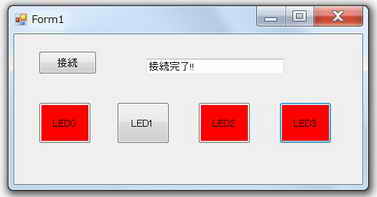
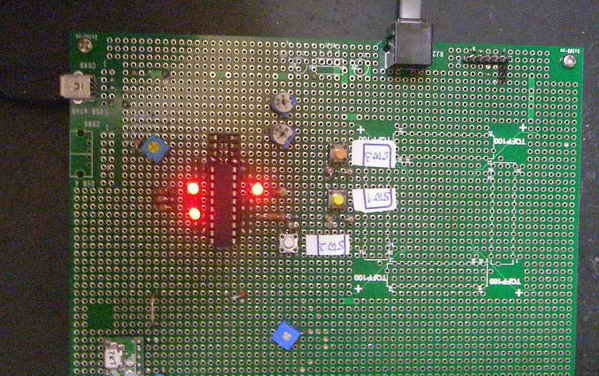
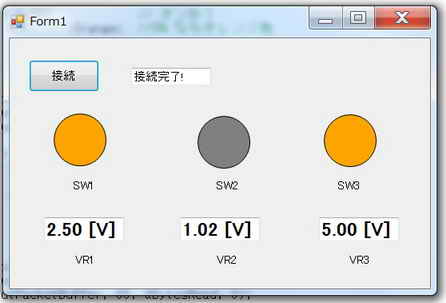
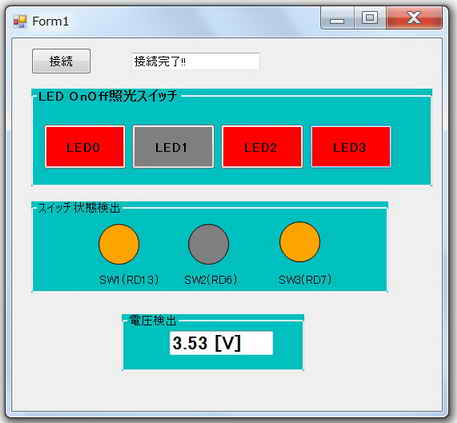
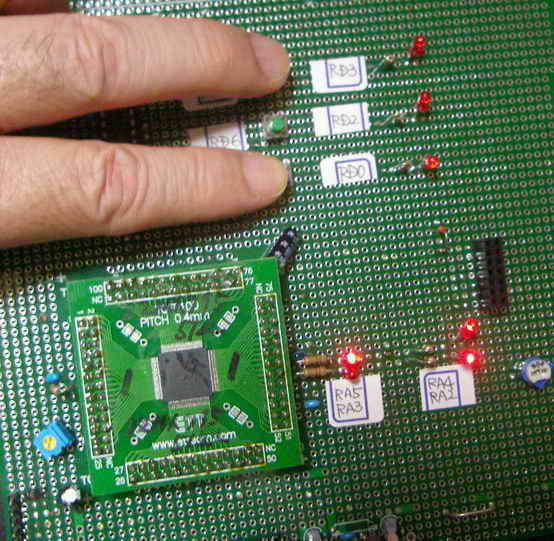
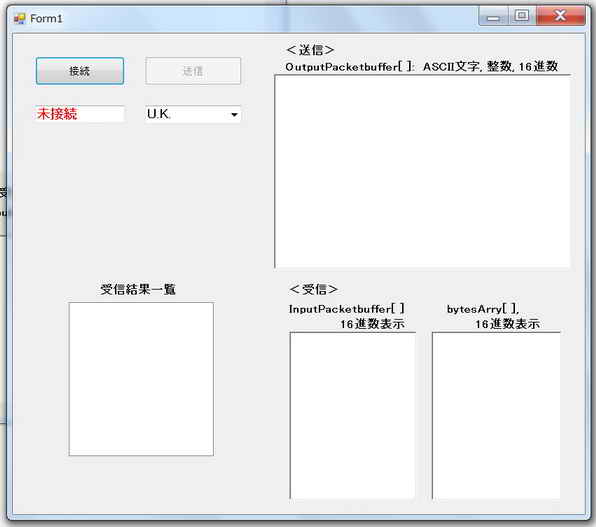
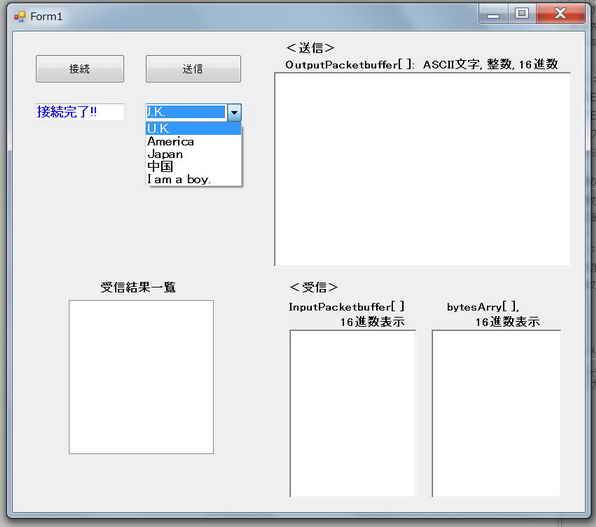
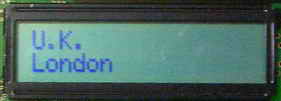
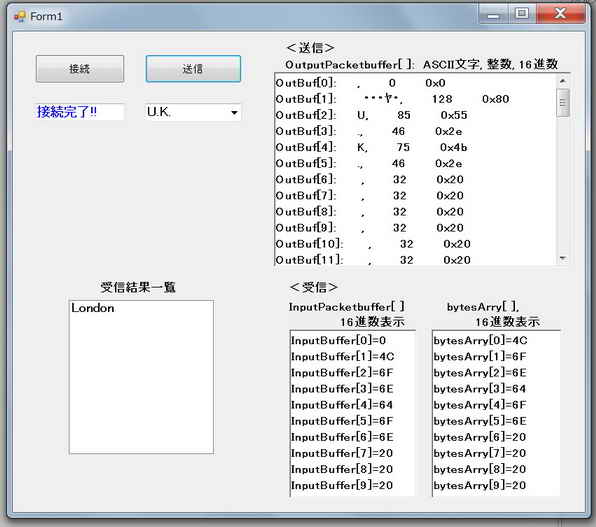
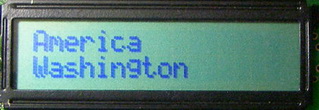
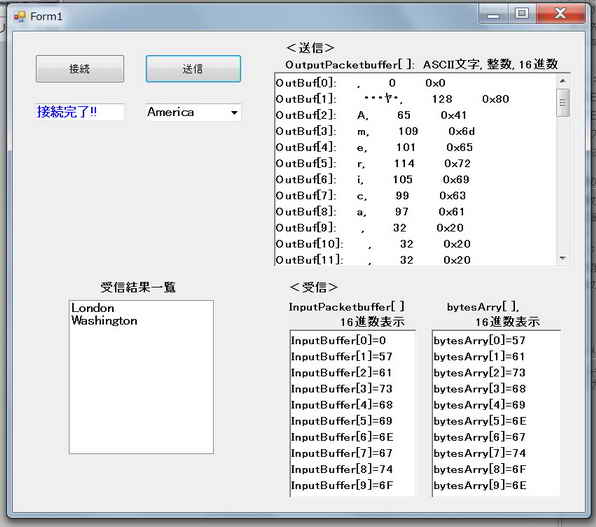
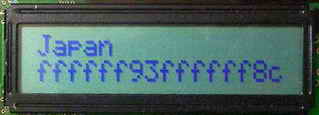
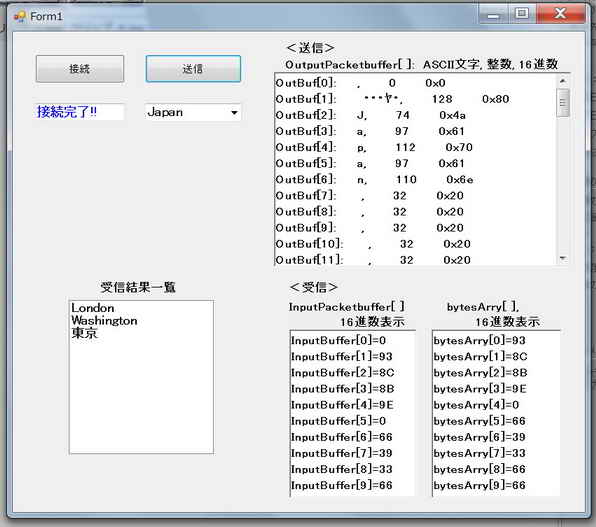
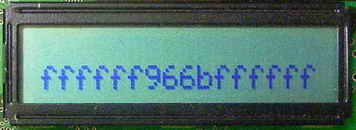
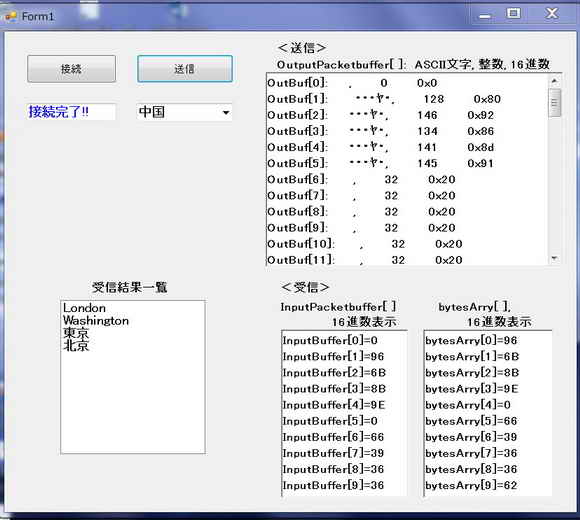
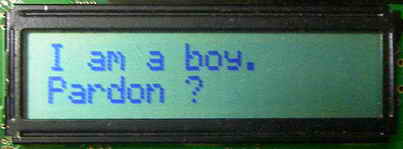
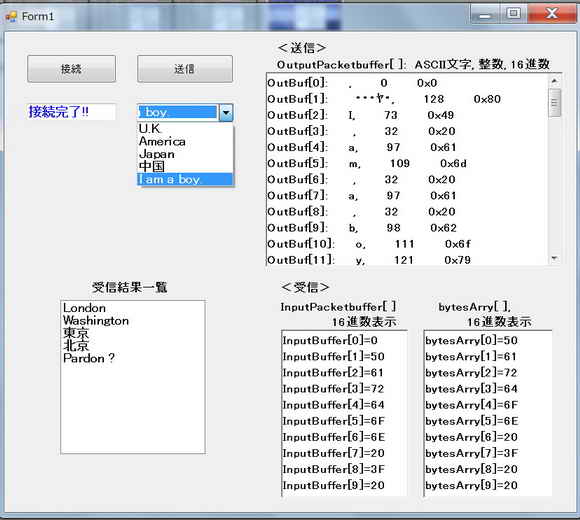
 を またOFFの場合は画像
を またOFFの場合は画像 を表示のこと。画像は重ねて配置のこと。
を表示のこと。画像は重ねて配置のこと。